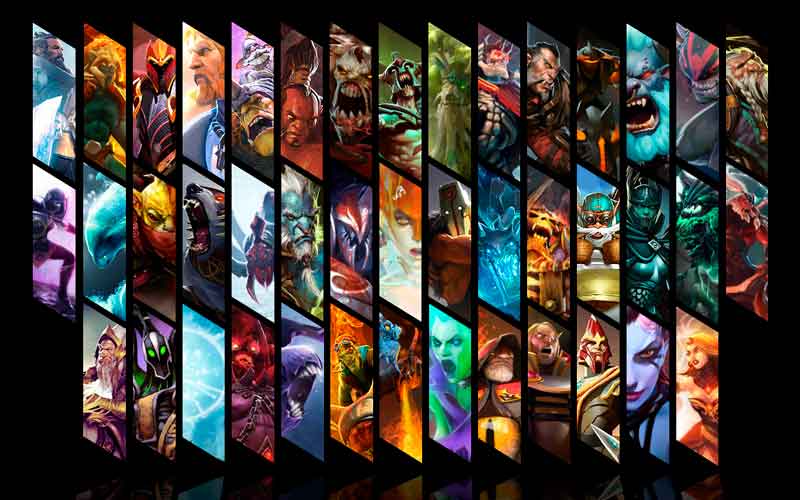How to Win Dota 2’s Teamfights: Positioning, Timing, and Coordination

How to Win Dota 2’s Teamfights: Positioning, Timing, and Coordination
Teamfights are the heart of Dota 2, often determining the outcome of a match. Winning teamfights requires more than just raw mechanical skill—it demands precise positioning, impeccable timing, and seamless coordination with your team. Whether you're initiating, peeling for your carry, or dealing damage, understanding your role and executing it effectively is crucial. In this guide, we’ll explore how to master positioning, timing, and coordination to dominate teamfights and secure victory.
Why Teamfights Are Decisive in Dota 2
Teamfights are pivotal moments in Dota 2 that can shift the momentum of a game. Key reasons why teamfights matter include:
- Objective Control: Winning a teamfight allows your team to secure objectives like towers, barracks, or Roshan.
- Momentum Shifts: A well-executed fight can snowball your team’s lead or turn the tide if you’re behind.
- Resource Denial: Eliminating key enemy heroes prevents them fr om farming or contributing to their team.
- Psychological Impact: Consistently winning fights demoralizes opponents and forces them to play defensively.
For more insights into optimizing your gameplay, check out our guide on how to climb the ranked ladder effectively.
Tip: Always know your role in a teamfight—whether it’s initiating, dealing damage, or protecting your teammates—and execute it decisively.
Mastering Positioning in Teamfights
Positioning is one of the most critical aspects of winning teamfights. Wh ere you stand and how you move during a fight can make or break your team’s chances. Here’s how to improve your positioning:
- Frontline Heroes: Tanks and initiators should position themselves at the front to absorb damage and disrupt the enemy team. Examples include Axe, Tidehunter, and Centaur Warrunner.
- Backline Heroes: Fragile carries and spellcasters should stay safe at the backline while dealing consistent damage. Examples include Phantom Assassin, Sniper, and Skywrath Mage.
- Prioritize Vision: Avoid fighting in areas without vision, as enemies can exploit these blind spots with ambushes or disables.
- Stay Mobile: Use mobility tools like Blink Dagger, Force Staff, or movement speed buffs to reposition during fights and avoid being caught.
By mastering positioning, you’ll ensure you contribute effectively without putting yourself in unnecessary danger. For more advice on positioning, explore our guide on optimizing hero roles.
The Importance of Timing in Teamfights
Timing is everything in teamfights. Engaging too early or too late can cost your team the fight. Here’s how to nail the timing:
- Wait for Cooldowns: Ensure your team’s key abilities (e.g., Black King Bar, ultimates) are ready before engaging.
- Initiate on Out-of-Position Enemies: Look for opportunities to catch isolated or poorly positioned heroes.
- Avoid Overextending: Don’t chase enemies too far if it leaves your team vulnerable to counterattacks.
- Coordinate Ultimates: Chain powerful abilities like Ravage (Tidehunter) or Reverse Polarity (Magnus) with follow-up disables or burst damage for maximum impact.
Proper timing ensures your team strikes when the odds are in your favor. For advanced tips, refer to our resource on mastering ability usage.
Coordination: The Key to Seamless Teamfights
Teamfights are a collective effort, and coordination is what ties everything together. Here’s how to improve your team’s synergy during fights:
- Communicate Clearly: Use pings or voice chat to call out targets, cooldowns, or enemy positions.
- Focus Fire Priority Targets: Coordinate with your team to eliminate high-priority enemies like squishy supports or enemy cores first.
- Peel for Your Carries: Supports should use spells like Earthshaker’s Fissure or Lion’s Hex to protect their fragile teammates fr om divers.
- Adapt Mid-Fight: Be flexible and adjust your strategy if the fight isn’t going as planned—for example, retreating if the enemy has stronger follow-ups.
Strong coordination ensures everyone contributes effectively to the fight. For more advice on teamwork, explore our guide on enhancing team dynamics.

Common Mistakes in Teamfights
Even experienced players make mistakes during teamfights. Here are some common pitfalls to avoid:
- Poor Focus Fire: Attacking different targets reduces your team’s overall effectiveness.
- Overcommitting: Chasing fleeing enemies too far leaves your team exposed to counterattacks.
- Ignores Enemy Threats: Underestimating high-damage or disruptive heroes can cost your team the fight.
- Lack of Communication: Failing to coordinate with your team leads to disjointed efforts and missed opportunities.
Addressing these mistakes ensures smoother and more effective teamfights. For more advice on avoiding errors, refer to our guide on enhancing decision-making skills.
Warning: Poorly executed teamfights can cost your team objectives and momentum—always prioritize coordination and timing.
Tips for Practicing Teamfight Skills
To master teamfights, incorporate these practical tips into your routine:
- Review Replays: Analyze your matches to identify moments wh ere better positioning, timing, or coordination could have changed the outcome.
- Watch Professional Matches: Observe how top teams execute teamfights and adapt their strategies to your own games.
- Queue with Friends: Playing with a group of trusted teammates allows you to practice coordination in a controlled environment.
- Experiment with Roles: Try different roles (e.g., initiator, carry, support) to understand how each contributes to teamfights.
These practices will help you develop strong teamfight habits over time. For more advanced tips, explore our resource on mastering competitive strategies.
Final Thoughts
Winning teamfights in Dota 2 is a combination of positioning, timing, and coordination. By mastering these elements, avoiding common mistakes, and continuously improving your decision-making, you’ll give your team the best chance of securing victory.
Stay patient, practice regularly, and always look for opportunities to improve your gameplay. With time and effort, you’ll climb the ranks and reach new heights in your Dota 2 journey. For more tips and guides, visit our comprehensive resources on Dota 2 strategies.











